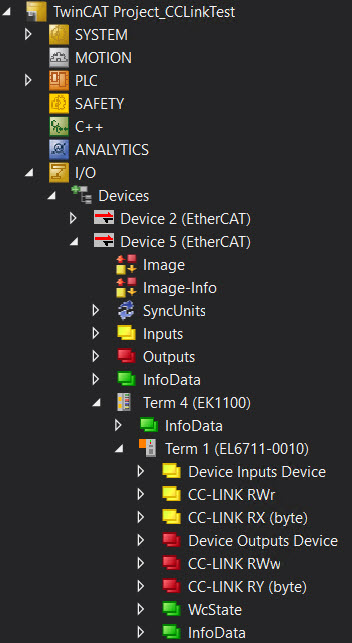Basic function principles
The EL6711-0010 CC-Link slave terminal enables data exchange between EtherCAT master and CC-Link master. It is therefore a slave from perspective of both bus systems. The process data are created and configured via the EtherCAT master, where bus-specific settings such as baud rate, station address etc. are also implemented.
In the delivery state the EL6711-0010 automatically applies the appropriate settings such as CC-Link version, number of occupied stations and number of extended cycles, based on the created process data. These automatically created settings can be adjusted so that the combination of the number of occupied stations or the extended cycles matches the user requirements (Index F800, SubIndex 05: Minimize). Furthermore, it is possible to make these settings manually or to adjust and change them afterwards. This means that no settings, parameterization or configuration are required on the part of the CC-Link master.
During data exchange, predefined process data are copied to the memory area of the terminal, where they are available to the respective opposite side for further processing.
The context menu (right-click, then select "Add New Item...") can be used to create a configuration or integrate the CC-Link slave terminal in a TwinCAT project. Alternatively, select the "Scan" function from the context menu of device n (EtherCAT), which automatically reads all connected devices and boxes and integrates them into the structure.
